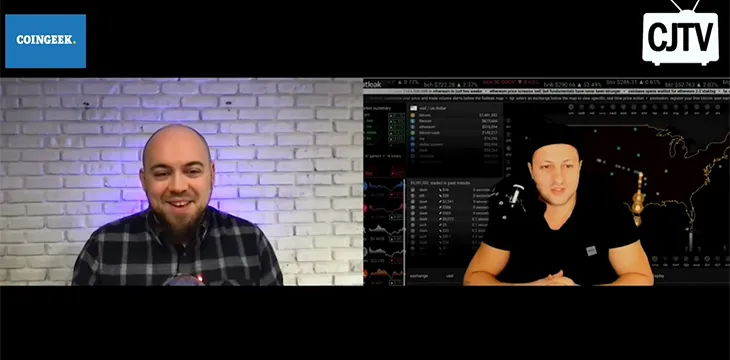|
Getting your Trinity Audio player ready...
|
Why is BTC no longer Bitcoin? How and why did enterprises around the world take control of BTC and derail it?
On CJTV’s episode, titled “BANKS Hijacked Crypto – Hidden Puppeteers Exposed,” CoinGeek’s Chief Bitcoin Historian Kurt Wuckert Jr. gives the audience an in-depth look at how Bitcoin got hijacked and how outside influences were able to derail BTC from what the whitepaper set Bitcoin out to be.
Host “CJ” begins the show with a statement: “Expose the puppet masters, whose pulling the strings, whose sponsoring what, and what’s actually going on! Pull the curtain back, drop the truth bombs, no mercy.”
From there, the two take a deep dive into who has funded the industry, what their special interests are, what the group of individuals with significant influence over the BTC network’s end goal might be, why BSV is Bitcoin as described in the whitepaper, and much more.
“All of a sudden Blockstream got a $55 million payment from a company called AXA insurance—a major European financial institution that has a venture capital arm. Curiously, at the time, the CEO of AXA was a guy named Henri de Castries, a French multi-billionaire who at the time, was the president of the Bilderberg Group. He paid $55 million to help found the company Blockstream to professionalize Bitcoin developers, so now, you take these software guys and say okay, now you are making a few hundred grand a year to develop what I want on Bitcoin—whose going to debate with you as the professional developer? Who’s going to fight, who’s going to argue? they control the narrative,” said Kurt.
He added, “It’s not just Blockstream if you look at who else is evolved in this, Blockstream also has ties to Digital Currency Group, Blockchain Capital, and Digital Garage—these are all other big venture capital groups—and if you go one step up, they all have very close connections to Mastercard…They’re saying let’s put some money together, let’s pay every single developer to do whatever it is we want—and then from there all of a sudden, Bitcoin can’t scale, Bitcoin can’t do any of these things, unless! You use Lightning Labs technology, another company owned by Digital Currency Group and MasterCard, or Coinbase—also owned by Digital Currency Group and MasterCard, and the same people. So all of a sudden you have this walled garden of things under the guise of decentralization.”
Throughout the conversation, Kurt follows the money and uses the paper trail to show the audience that the decisions being made on the BTC network are being influenced by the enterprises and venture capitalists who have a stake in the entities that pay the BTC core developers. Which begs the question, why do the companies and individuals with an ownership stake in these BTC companies want to control the narrative? What do they want out of this?
CJ asks Kurt, “What is the end-game for the puppeteers? Basically, they have subverted the space, they have hi-jacked Bitcoin, they are sponsoring like 90% of the projects if not more in the space, what is the end goal?
To which Kurt answers, “It’s kind of like when you patent something in order to stop it from killing your business model. If you are making a lot of money selling chemotherapy, but you can cure cancer for a dollar, you will want to patent that cure and not sell that cure because you are selling something that costs $20,000 a month (chemotherapy), so if you try to sell the thing that’s a dollar, you go out of business.”
“So there’s a business incentive to hold back the best technology if it’s not profitable. So that’s really truly what I think it is. Bitcoin allowed to scale with no limits anywhere completely replaces the entire fiat economy, it replaces not just MasterCard, it replaces the banking system, MoneyGram, and Western Union. It replaces all global remittances, all of that goes away, and it gets replaced with something that is practically free, perceptibly free to the user, frictionless, it works every single time, and then you actually own the ability to do that.”
Bitcoin as it is laid out in the whitepaper is a threat to a lot of existing businesses. One way to curb that threat is to take a stake in it, “if you can’t beat them, join them.” With the ability to control the BTC network, the individuals and enterprises funding BTC development can effectively determine the capabilities and future of the network.
To learn more about who is funding BTC core development, why they are interested in controlling BTC, and the effect that their influence has had on the BTC network, you are going to want to watch “BANKS Hijacked Crypto – Hidden Puppeteers Exposed (AMA with Kurt Wuckert Jr.)” on CJTV.

 08-12-2025
08-12-2025 





